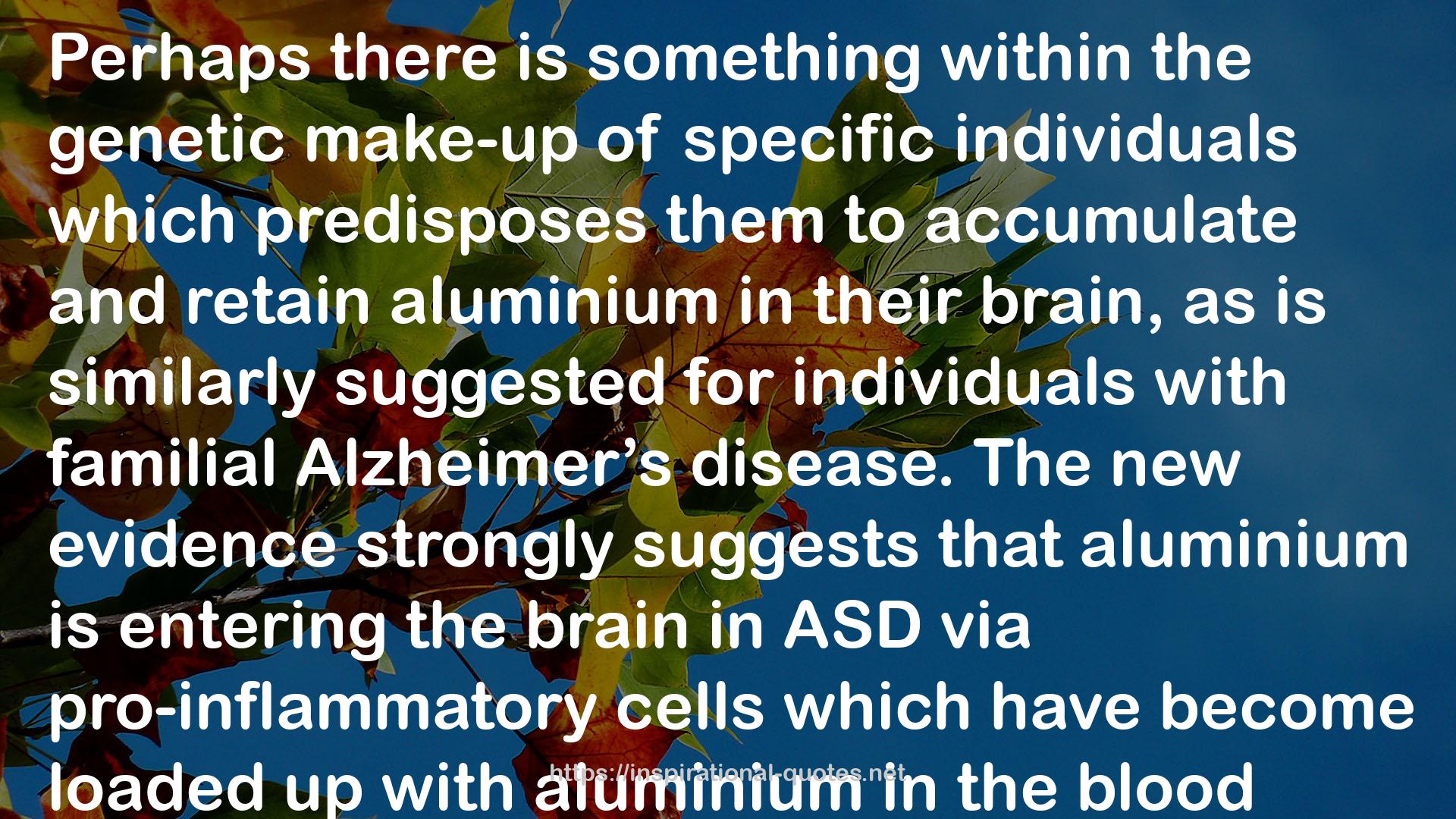10
" We have phosphate on our DNA. Aluminum attaches itself to it and messes up our genetic coding process. While the aluminum is inside a cell, some of its particles attach to adenosine triphosphate (ATP). The ATP is in charge of our cell’s energy production. So, in this manner the aluminum can affect our energy level. We have enzymes (proteins) within our cells that depend on attaching themselves to calcium (Ca) or magnesium (Mg) to function properly. Once our enzymes have attached to the Ca and Mg, they can carry on with their functions. Because the aluminum has such a strong positive charge, it’s able to break the bond between our enzymes and Ca or Mg. These enzymes are now no longer attached to Ca or Mg. They have become neutralized and are unable to carry out their responsibilities. We need these enzymes for efficient metabolism, but now the aluminum is attached to the enzymes instead. The protein molecules all look a little different because their shape reflects what they are designed to do. Aluminum disturbs their individual tasks and clumps them together so they are now misshapen and no longer functioning. Aluminum also messes with the cell surface, the membrane, the outer layer of the cell. With a dysfunctional cell membrane, everything inside the cell becomes compromised and it is no longer able to properly communicate with the environment surrounding the cell about what needs to be done[96]. "
― James Morcan , Vaccine Science Revisited: Are Childhood Immunizations As Safe As Claimed? (The Underground Knowledge Series, #8)
16
" They also observed that the amygdala in the vaccinated monkeys didn’t mature with time as it was supposed to. The amygdala, incidentally, plays an important role in social interactions. Maybe it’s not so surprising they also observed that in the vaccinated monkeys the opioid antagonist diprenorphine (DPN) levels never lowered throughout the study. In the placebo group, the DPN levels decreased noticeably. One function of DPN is to block social interaction. What this means is the research showed that the social behavior of those monkeys that received the actual vaccines, where the DPN levels did not decrease, turned anti-social. We found there was at least one more study undertaken to verify the association between DPN and social behavior. Performed in 1981[141]. The authors of that study believe the release of opioids in the brain encourages social interactions. So, when the body fails to decrease the amount of the antagonist DPN, it not only blocks the opioids that encourage social interactions, but it blocks the desire to socially interact. "
― James Morcan , Vaccine Science Revisited: Are Childhood Immunizations As Safe As Claimed? (The Underground Knowledge Series, #8)
 Vaccine Science Revisited: Are Childhood Immunizations As Safe As Claimed? (The Underground Knowledge Series, #8)
Vaccine Science Revisited: Are Childhood Immunizations As Safe As Claimed? (The Underground Knowledge Series, #8)